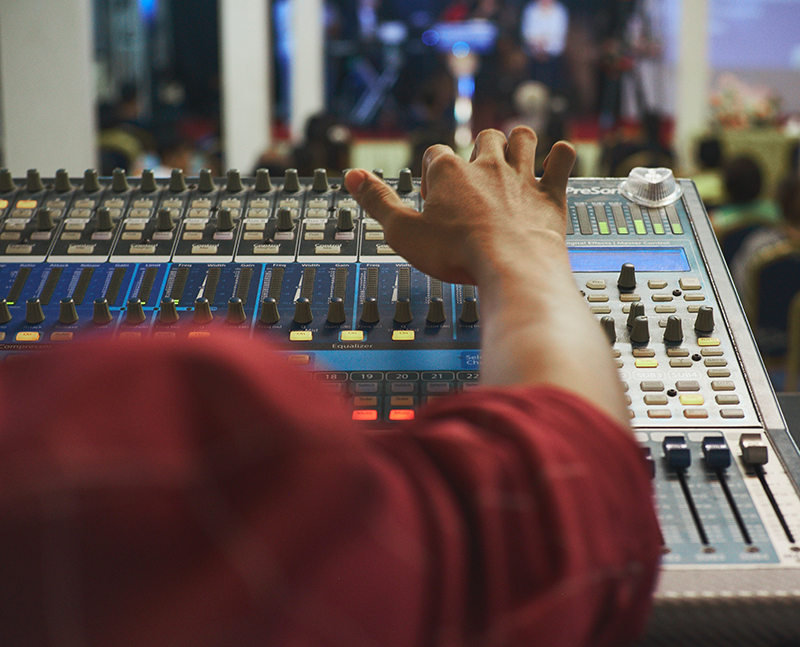
Compression: This isanother fabulous tool offered on every input channel of almost every modern digital console. Use it wisely and you’ll be a hero, but woe to the engineer that lets this piece of processing get the upper hand. Many a great-sounding input has been squashed and suffocated by over compressing. The trick is: Use just enough and avoid overcooking it.
At first, I recommend applying compression in small increments, adding more later only if needed. A good starting compression ratio on a vocal is in the range of 2:1 to 4:1, coupled with a threshold setting that causes a reduction in level of 3 to 6 dB during loud passages but tends to leave the quieter parts alone. I then add some make-up gain in the 1.5 to 3 dB range.
A word of warning: be cautious when using make-up gain! This is gain added to the channel regardless of compression, so be sure the mic is stable and feedback-free in the PA and monitors.
Let’s revisit the seesaw analogy. With the vocalist singing at a nominal level (sometimes quiet and occasionally a bit loud), 2 to 4 dB of gain reduction on the compressor’s meter could use makeup gain of 3 dB or so. Thus, the quieter parts will get a little boost but the compressor will knock down the louder parts. Volume leveling and transient control is the end goal.
FX: Effects can be the crown jewel of vocal processing. Add a blend of reverb, delay, and chorus/harmonizing to the lead vocal and notice how the whole mix comes to life. Try a slightly different blend with the background vocals to create separation and depth. Here are some FX tricks and techniques that can further help with vocals:
- EQ plus FX returns. When effects are really spectacular, they’re often subtle and understated. You feel them “around” the vocals but they don’t overpower them. This subtle texture can be achieved by adding a HPF and a LPF (low-pass filter) to the FX returns. Try rolling the HPF up to 200 Hz and the LPF down to 4 kHz on the vocal reverb and delay returns, and you’ll feel the FX sink into the background, adding warmth without sounding obvious.
- Using the Aux Sends, feed the return from the Vocal Delay to the Vocal Reverb in addition to the normal vocal channels. With this technique, you hear the vocal reverb as it happens along with hearing a “delayed bounce” from the delay sending to the reverb a bit later.
- Use some warm Hall Reverb in conjunction with a Chorus or Harmonizer on the background vocals. Be careful not to overdo the Chorus as it can cause the vocals to sound a bit “pitchy,” but used in small doses it can add “sheen” and wonderful width to background vocals, helping to place them further in the background and to the sides so the lead vocal sits apart. Play around with various presets (I suggest using headphones first to preview several versions of chorus or harmonizing) and then add it in slowly until you just start to hear it. It’s cana game-changer.
- As with EQ, choose different FX for the lead versus the background vocals. The goal is for the main vocal to sit loud and proud in the middle while the background vocals live up to their name.
It’s an understatement to express that vocals are “Job 1” when it comes to mixing worship music. The creative team and performers will appreciate it, and you can bet the congregation will as well. And nothing will distract a congregation quicker than a badly EQ’d and/or poorly mixed vocal. So if they’re singing along and getting lost in worship, you’ve done your job.
